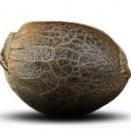Aloha Green Apothecary is Growing Stunning Legal Medical Bud in Hawaii
Автор:
[Grower Бот], в Growing info (на англ)
-
Похожие публикации
-
- 0 Comments
- 2,892 просмотра
-
- 0 ответов
- 1,016 просмотров
-
2016. Раздача от MudroSeeds и Grower.WIN: фемки New Moon, Ridick, Fruity Trips, Mountain Kush, Hawaii и еще разные вкусняшки
Автор: pushkinkot,
- 16 ответов
- 5,213 просмотра
-
Fast Bud Auto Fem (Sweet Seeds) | BioBizz | ДНАТ МГЛ 250 | ш45/в75/г60 | Самопальный CoolTube из IKEA и угольник из стройматериалов 1 2
Автор: Вероятно Эл,
- стройматериалов
- угольник
- (и ещё %d)
- 40 ответов
- 7,373 просмотра
-
-
Сейчас на странице 0 пользователей
- Нет пользователей, просматривающих эту страницу





